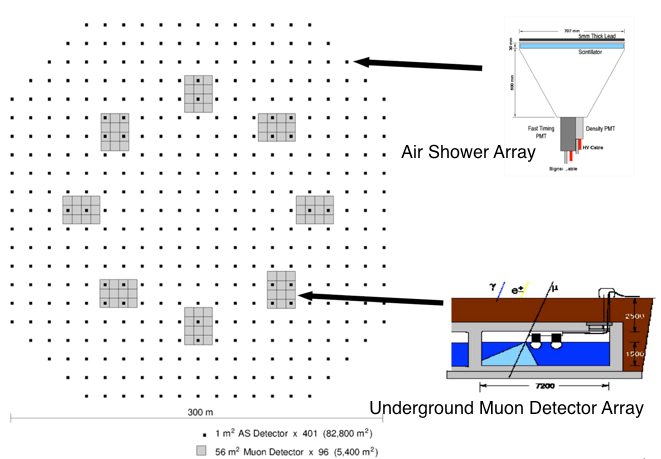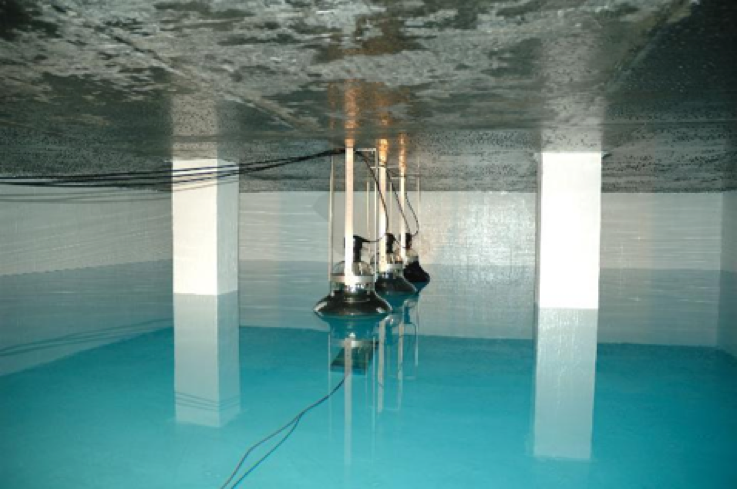Underground Muon Detector Array
The surface air shower array alone cannot tell us whether the primary particle of an observed air shower is a cosmic-ray or gamma-ray particle, nor is it capable, when the observed air shower is of cosmic-ray origin, of distinguishing the nuclear species of the primary particle. Air showers induced by cosmic rays contain a lot of elementary particles called muons, while those induced by gamma rays contain few muons. We can greatly improve the gamma-ray sensitivity of the air shower array, if we build a detector that is sensitive only to muons and helps us select muon-poor air showers, i.e. air showers probably of gamma-ray origin, among those observed by the surface air shower array. We are planning to build a ~5,400 m2 muon detector array in the underground of the ALPACA surface air shower array. The muon detector array is sensitive only to muons contained in air showers, because the layer of soil on top of the muon detector array absorbs the electromagnetic component of air showers (electrons, positrons and photons), which account for most of the air shower particles, whereas muons easily penetrate the layer of soil.
Schematic view of the current design of the whole ALPACA observatory. Gray squares represent the underground muon detector array. Each square is a 56 m2 water-Cerenkov-type particle detector. The array consists of 8 pools, each one of which has 12 detectors.

Image of the water-Cerenkov-type particle detector. The photo shows the inside of a water-Cerenkov-type particle detector of the Tibet ASγ experiment. The detector is a water tank and completely shielded from light during observation. The 20-inch-diameter photomultiplier tubes suspended from the ceiling detect faint Cerenkov light emitted by muons passing though the water. The water tank has an area of 7.2 m x 7.2 m and is filled with water up to a depth of 1.5 m. There is a 2.5 m-thick layer of soil on top of the ceiling.
Image Credit: Institute for Cosmic Ray Research, University of Tokyo

